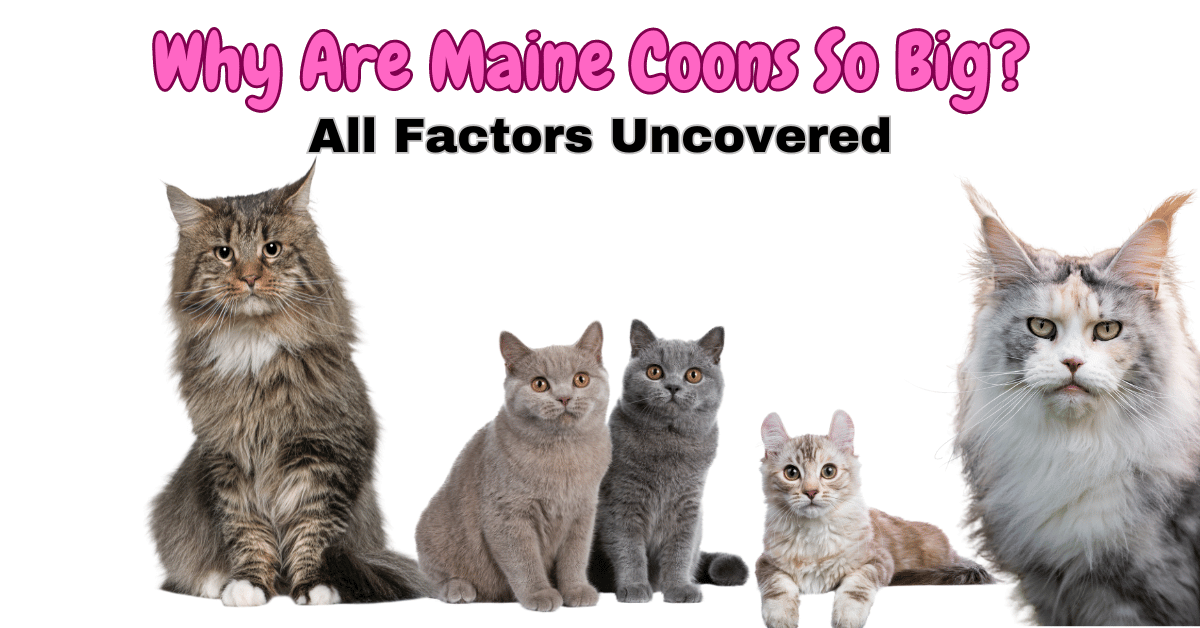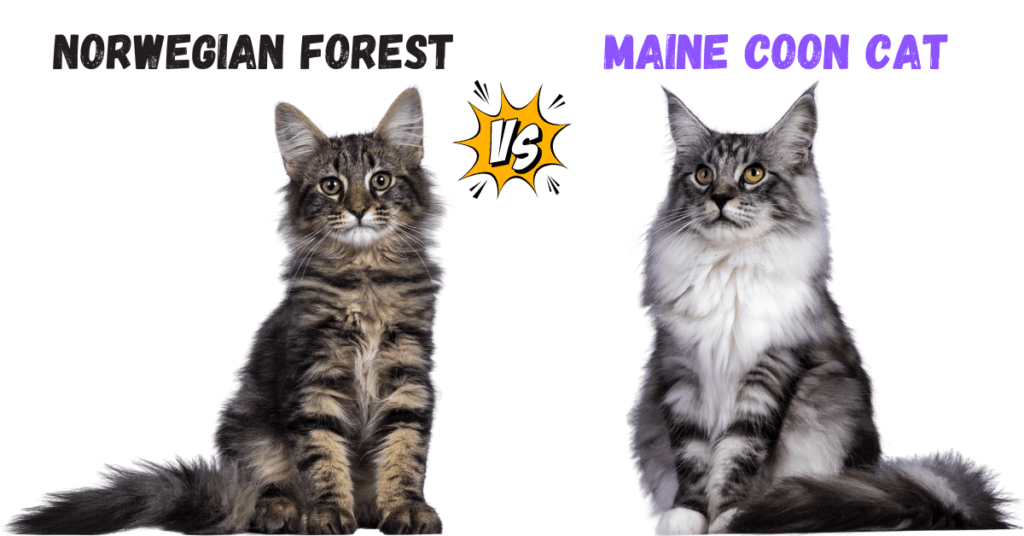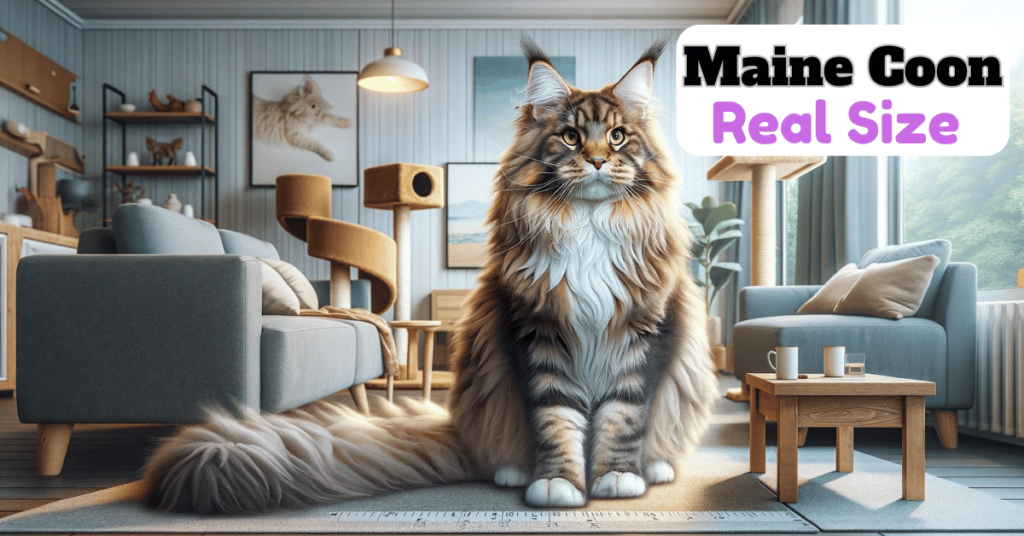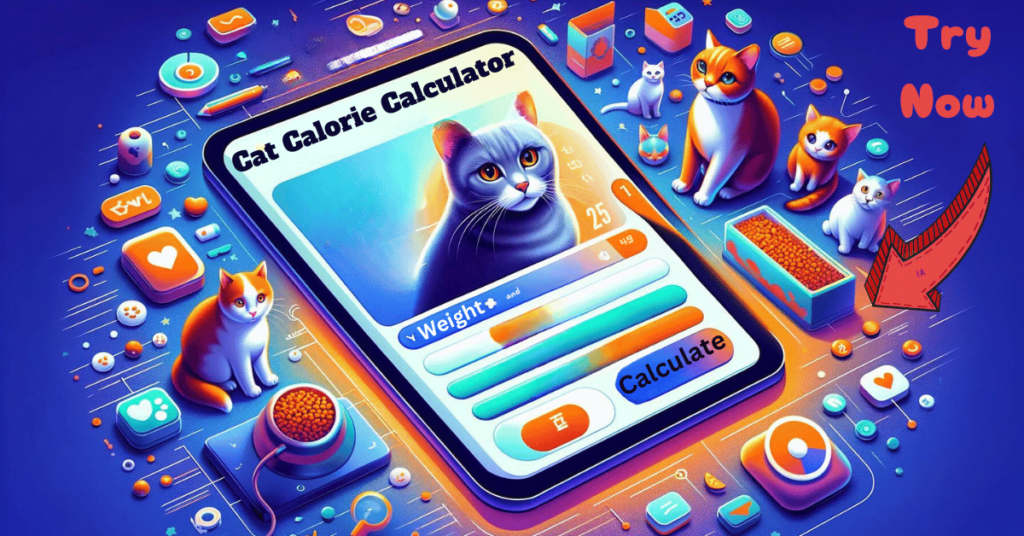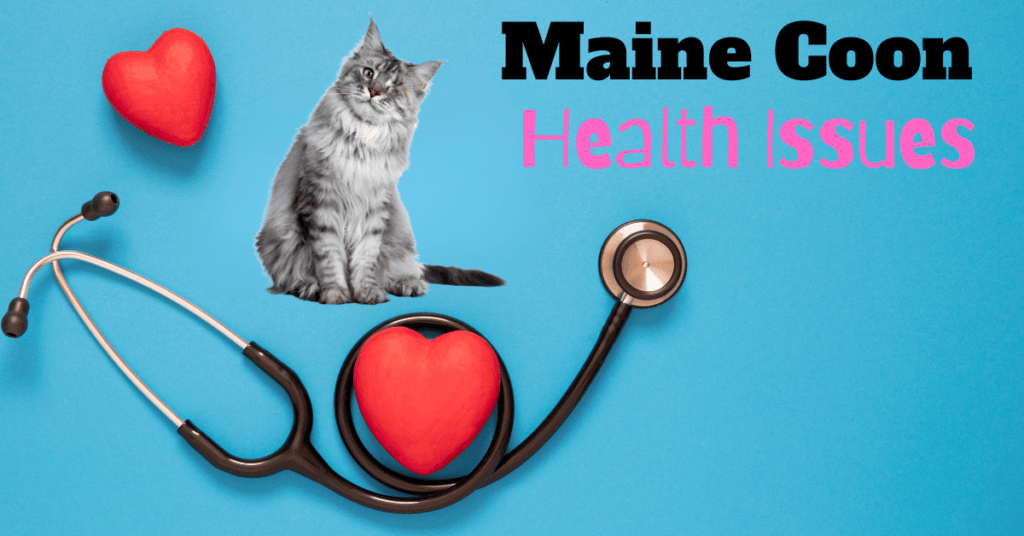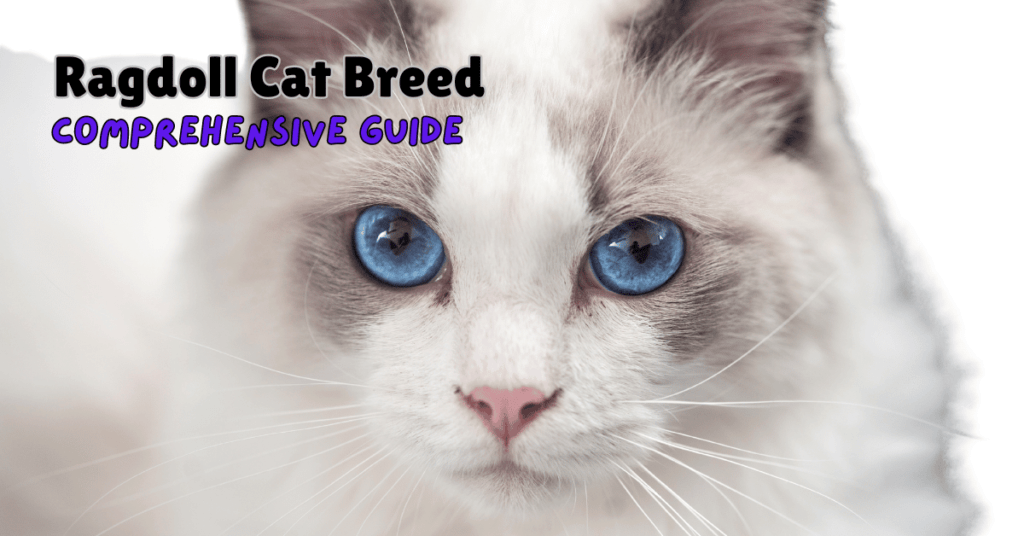This post contains affiliate links and I will be compensated if you make a purchase after clicking on my links.
Why Are Maine Coons So Big? An Introduction to Their Size
Maine Coons, with their majestic fur and gentle demeanor, also known as gentle giants, have captured the hearts of cat lovers worldwide. They typically fall in the 15-25 lb range, with females being slightly smaller, averaging between 10-15 lbs.
These cats have won several competitions for their size and are definitely one of the largest cat breeds, if not the largest, depending on how you measure it.
But what makes these cats so impressively large? There are many reasons behind their size, including genetics, natural selection, breeding practices, and proper care. Let’s dive into the various factors that contribute to the Maine Coon’s size.
Why Are Maine Coons So Big: Key Reasons
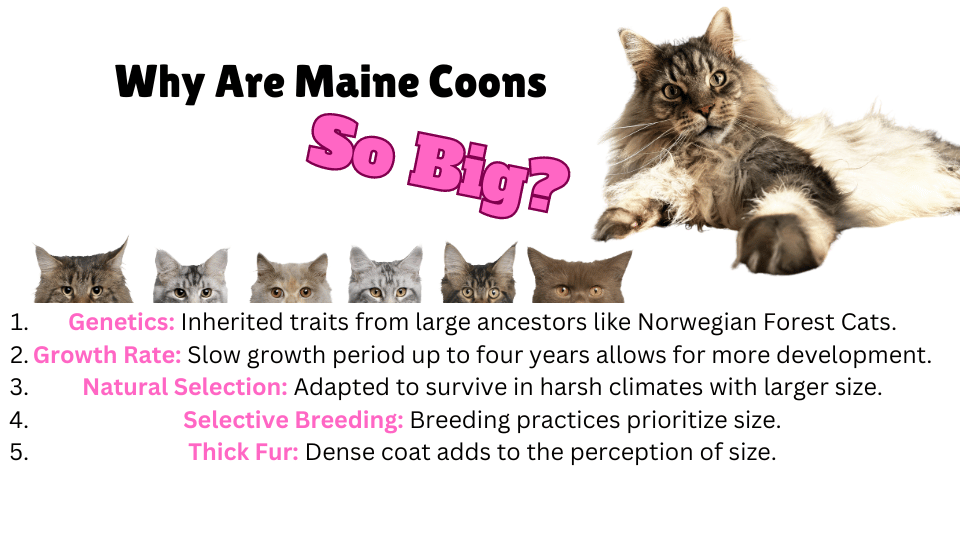
Genetic Factors
Norwegian Forest Cat Ancestry and Genetic Makeup
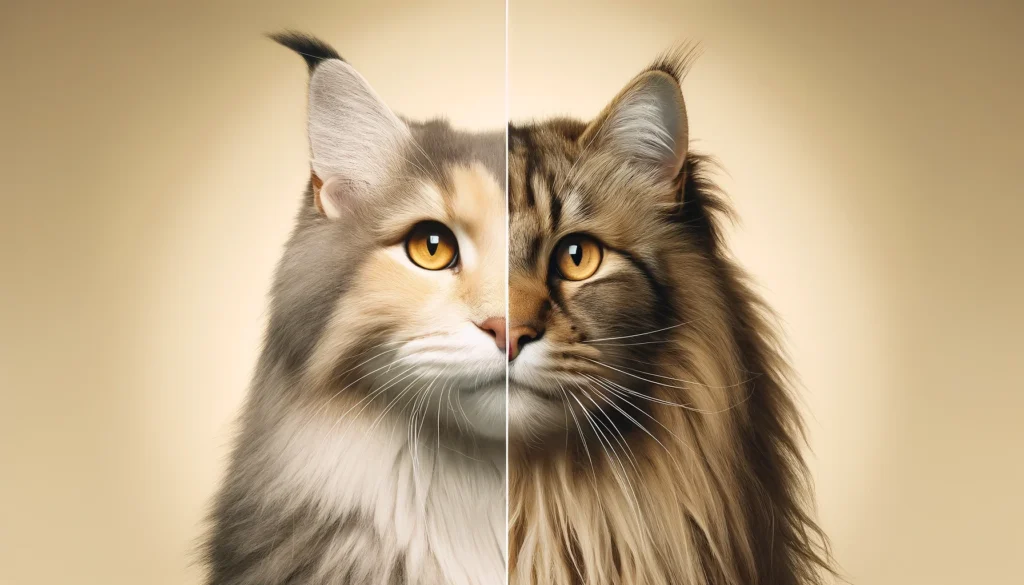
Most cat DNA kits reveal that felines primarily have Western European origins, and they can also uncover your kitty’s ancestors, domestication history, and breeding background. Many breeders agree that Maine Coons are descended from cats brought over by English seamen or Vikings.
These Vikings likely traveled with Norwegian Forest cats, either for hunting mice or simply for companionship on long voyages. This shared ancestry explains the strong resemblance between Maine Coons and Norwegian Forest Cats.
Growth Rate
Unlike most domestic cats that reach their full size within a year, Maine Coons continue to grow for three to four years. This prolonged growth period allows them to develop more muscle and bone mass, contributing to their larger size. The slow and steady growth ensures they become one of the largest domesticated cat breeds.
Natural Selection and Evolutionary Advantages
Adaptation to Harsh Climates
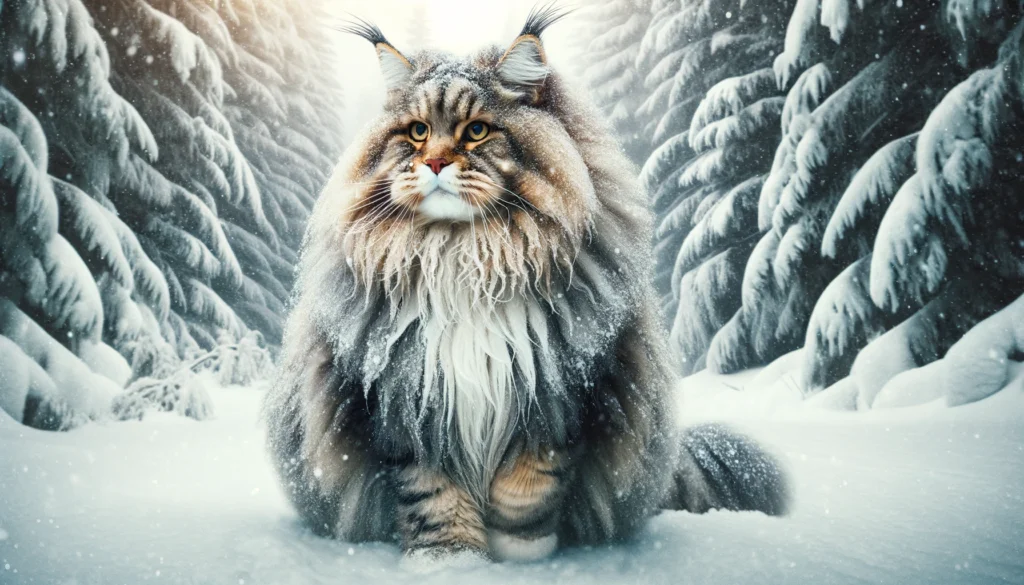
Maine Coons are believed to have naturally evolved to thrive in the cold, harsh climates. Their large size helps them retain heat more efficiently, a critical survival trait in colder environments. Larger cats lose heat more slowly due to a smaller surface area relative to their volume, which is advantageous in cold weather.
Hunting and Survival
In the wild, larger size provides several hunting advantages. Bigger cats can hunt larger prey and have better success in capturing food. This trait was likely passed down through generations of natural selection, where the most successful hunters were also the ones who survived and reproduced.
Breeding Practices
Selective Breeding for Size
Human intervention through selective breeding has also played a role in the Maine Coon’s size. Breeders often select the largest and healthiest cats to breed, thereby ensuring that the size trait is passed down to future generations. This practice dates back to when Maine Coons were prized for their size and hunting prowess, making them valuable assets on farms and homes.
Historical Context
In the 19th century, Maine Coons were showcased at state fairs, highlighting their impressive size and abilities. This public recognition further encouraged breeders to prioritize size in their breeding programs, contributing to the breed’s current reputation as one of the largest domestic cats.
Physical Characteristics
Thick, Shaggy Coat
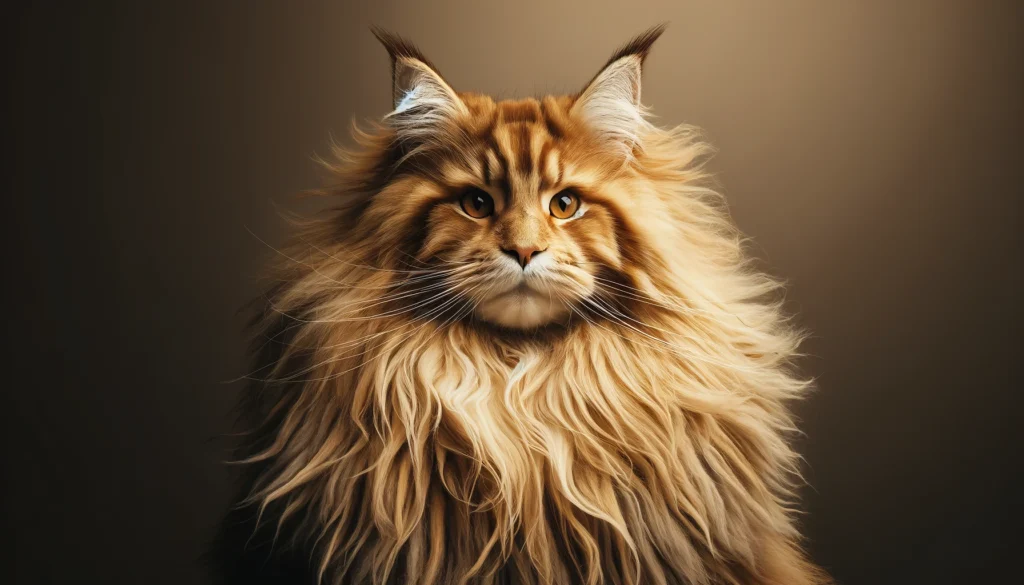
One of the most striking features of the Maine Coon is its thick, shaggy coat. This fur not only adds to their overall size but also serves a practical purpose. The dense undercoat traps warm air, providing insulation, while the longer guard hairs protect them from rain and snow. This luxurious fur coat enhances the perception of their size, making them appear even larger than they are.
Maine Coons also have a notably bushy tail, which adds to their overall appearance of size. The tail is thick and fluffy, complementing their long, luxurious fur and making them look even more robust and majestic.
Fun Fact: Due to their impressive size and majestic appearance, some people might mistake these gentle Maine Coons for larger wild predators like bobcats or lynxes.
Comparison with Other Large Breeds
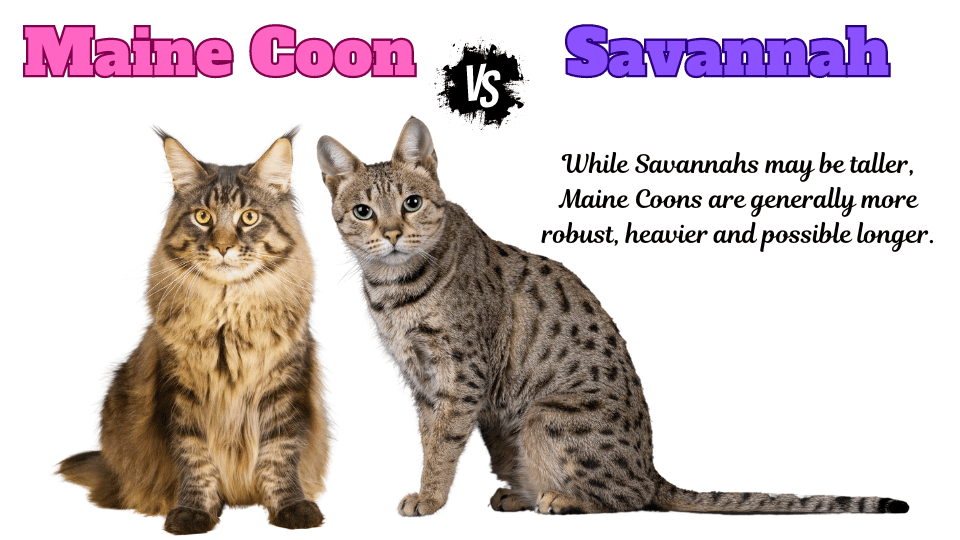
Maine Coons are often compared to other large cat breeds, such as the Savannah cat. While Savannahs may hold the record for height, Maine Coons are typically more robust and weigh more, solidifying their status as one of the largest cat breeds overall.
Fun Fact: The average domestic cat is typically around 18 inches long (excluding tail) and 9-10 inches tall. In contrast, Maine Coons generally range from 19 to 40 inches in length and 10 to 16 inches in height. This means a Maine Coon can be nearly double the size of your average house cat
Diet and Nutrition
High-Protein, Low-Carb Diet
A proper diet is crucial for maintaining the Maine Coon’s large size and overall health. These cats require a diet rich in animal-based proteins and low in carbohydrates. Protein supports muscle growth and maintenance, while low carbohydrate levels help prevent excessive weight gain, which can lead to obesity.
Feeding Recommendations
Maine Coons, with their impressive size and weight, require more food than the average cat breed, especially if they’re active. To keep your majestic feline in tip-top shape, it’s crucial to provide a diet that meets their higher calorie needs.
Maine Coons should be fed high-quality cat food that lists real meat as the first ingredient. Avoid fillers like corn, wheat, and soy, as these offer little nutritional value and can be tough on your cat’s digestive system. Keep an eye on portion sizes and limit treats to prevent obesity, a common issue for larger cat breeds.
Record-Breaking Maine Coons
Several Maine Coons have gained fame for their exceptional size. Stewie, a Maine Coon from Nevada, was recognized by the Guinness World Records as the longest domestic cat, measuring 48.5 inches from nose to tail. Another famous Maine Coon, Barivel from Italy, currently holds the record for the longest living domestic cat, at 47.24 inches.
Health Considerations for Maine Coons
With great size comes great responsibility. Maine Coons are prone to certain health issues, and understanding these can help you take better care of your feline friend. Here are the common health concerns:
- Hip Dysplasia: A genetic condition where the hip joint doesn’t fit properly, leading to arthritis and pain. Larger breeds like Maine Coons are more prone to this due to the stress their weight places on the hip joints.
- Hypertrophic Cardiomyopathy (HCM): A heart disease that causes the walls of the heart to thicken, potentially leading to heart failure. HCM is common in many larger cat breeds, including Maine Coons.
- Polycystic Kidney Disease (PKD): A condition where cysts form in the kidneys, leading to kidney dysfunction over time. Some lines of Maine Coons have a genetic predisposition to PKD.
Myths and Legends
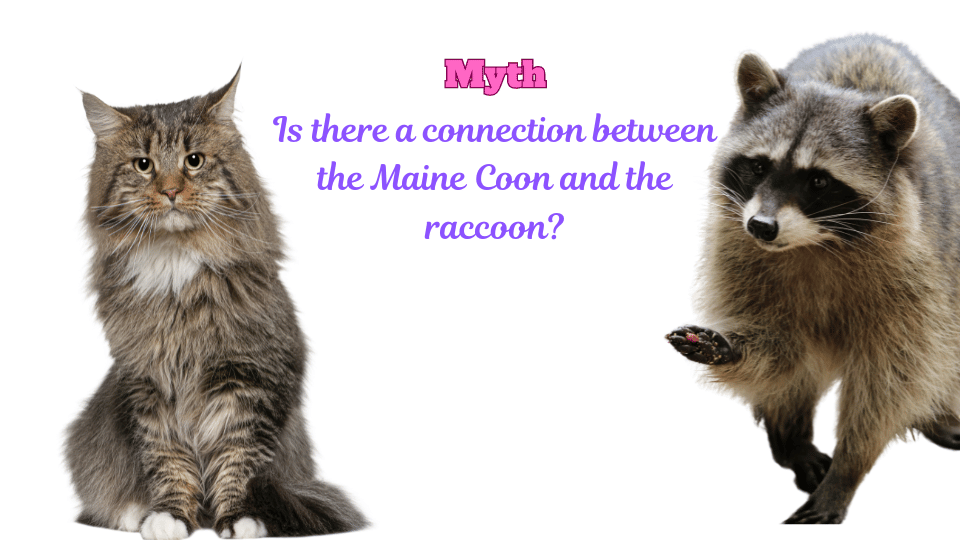
One of the most persistent myths about Maine Coons is that they are part raccoon. This myth likely arose due to their similar appearance and love of water. However, it is scientifically impossible for cats and raccoons to interbreed.
Another myth involves Marie Antoinette’s cats, which supposedly contributed to the breed’s development in the United States. While these stories are fascinating, they lack scientific evidence.
The Large Size of Maine Coons: What Sets Them Apart
The impressive size of Maine Coons is the result of a combination of genetics, natural selection, selective breeding, and proper care. While Maine Coons are among the largest cat breeds, other breeds like the Savannah and Ragdoll also compete in size, with some individuals occasionally being larger.
Not all Maine Coons will grow to a monstrously large size. Often, the reason a Maine Coon is smaller simply comes down to genetics. Whether it’s their thick, luxurious fur or their playful personality, Maine Coons continue to captivate and charm cat lovers around the world. If you’re considering adding a Maine Coon to your family, be prepared for a big cat with an even bigger heart.
Meet Sean, a fintech whiz with a penchant for pet purrs and blockchain buzz. After a decade of fintech feats, Sean’s tech talents leaped from ledger lines to litter lines, driven by a passion for pets and a vision for a more connected pet care community. With three critter companions as co-pilots, Sean launched this blog to share a treasury of pet-friendly tech tips and tales.

